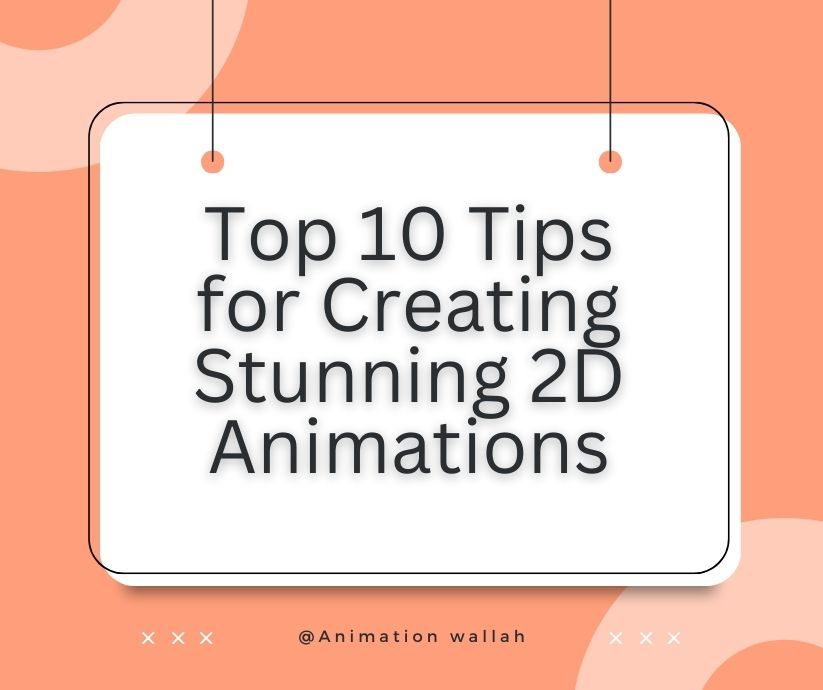Top 10 Tips for Creating Stunning 2D Animations
Creating engaging and visually appealing 2D animations requires more than just technical skills; it’s a blend of art, storytelling, and precision. Whether you’re an aspiring animator or a seasoned artist looking to improve, these top 10 tips will help you create stunning 2D animations that captivate audiences and convey your story effectively.
Master the Basics of Animation Principles
Before jumping into complex animations, it’s essential to master the 12 principles of animation. Concepts like squash and stretch, anticipation, timing, and exaggeration are fundamental in making animations look dynamic and realistic. Familiarize yourself with these basics to elevate your animation work right from the start.
Create Strong Storyboards
A well-crafted storyboard is the backbone of a successful animation. Use it to map out each scene, sequence, and character movement. Storyboarding helps you visualize the flow of your animation, plan the pacing, and identify key frames, ensuring your final animation is coherent and impactful.
Focus on Character Design and Movement
Characters are often the heart of 2D animations, so focus on creating unique, expressive characters that resonate with your audience. Use gestures, facial expressions, and body language to bring characters to life. Keep designs simple but recognizable, especially if they’ll be animated frequently or in various poses.
Plan Smooth Keyframes and Use Tweening Effectively
Keyframes mark the start and end points of each movement, so make sure they’re clean and smooth. Use tweening (in-between frames) to create a fluid transition between keyframes. Many animation software programs offer built-in tweening tools, like Adobe Animate, to help smooth out animations and reduce the workload.
Pay Attention to Timing and Spacing
Timing is critical in animation, as it dictates the rhythm and pace. Use **timing and spacing** to convey weight, speed, and emotion in your scenes. For instance, fast timing can imply excitement or urgency, while slower timing can evoke sadness or contemplation. Adjusting timing and spacing adds realism and personality to your animations.
Add Dynamic Backgrounds and Environments
While characters are crucial, a well-designed background enhances the world your characters inhabit. Use colors, textures, and subtle background animations to create a sense of depth and immersion. Avoid static or overly detailed backgrounds that distract from the main action; instead, keep backgrounds cohesive and complementary to your characters.
Use Color Psychology to Enhance Mood
Colors can have a significant impact on the mood and emotions conveyed by your animation. For instance, warm colors like red and orange evoke energy and excitement, while cool tones like blue and green can convey calm or sadness. Plan your color palette carefully, and use it to support the theme and atmosphere of each scene.
Add Sound Effects and Music
Sound design is often overlooked in 2D animation, but it’s crucial for creating an immersive experience. Sound effects add realism, while background music can set the mood. Use subtle, well-timed audio to enhance character actions and intensify emotional moments, but be careful not to overpower the visuals.
Experiment with Perspective and Angles
Playing with different camera angles and perspectives adds variety to your animation and keeps it visually engaging. Dynamic camera angles can convey depth and make scenes more interesting. Try using close-ups to emphasize emotions, wide shots for establishing scenes, and angles to show height or distance.
Review, Edit, and Seek Feedback
Finally, always review and refine your animation. Watch it multiple times, look for areas to improve, and make adjustments as needed. Seeking feedback from peers or mentors can provide valuable insights you might have missed. Small tweaks in timing, movement, or color can make a significant difference in the final product.
Conclusion
Creating stunning 2D animations is both an art and a science. By combining technical skills with creativity and storytelling, you can produce animations that leave a lasting impact. Remember to focus on the basics, plan meticulously, and don’t be afraid to experiment. With these 10 tips, you’re on your way to producing animations that truly captivate and resonate with your audience.
Also Read Getting Started with 2D Animation: A Beginner’s Guide in 2025

